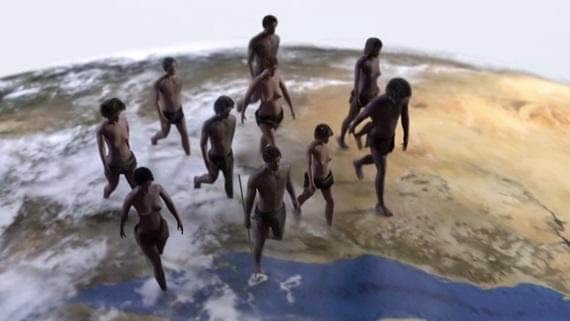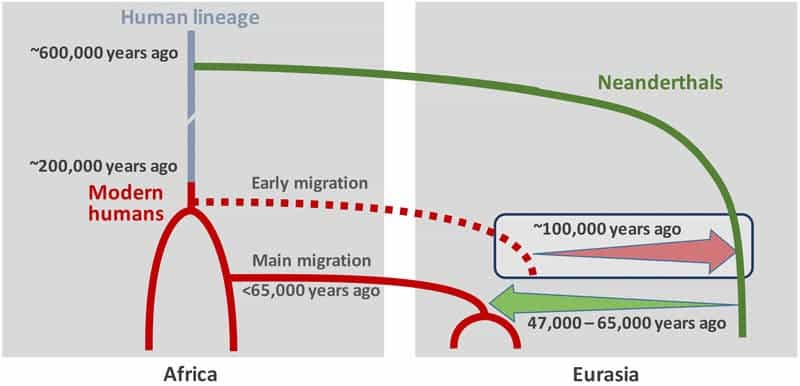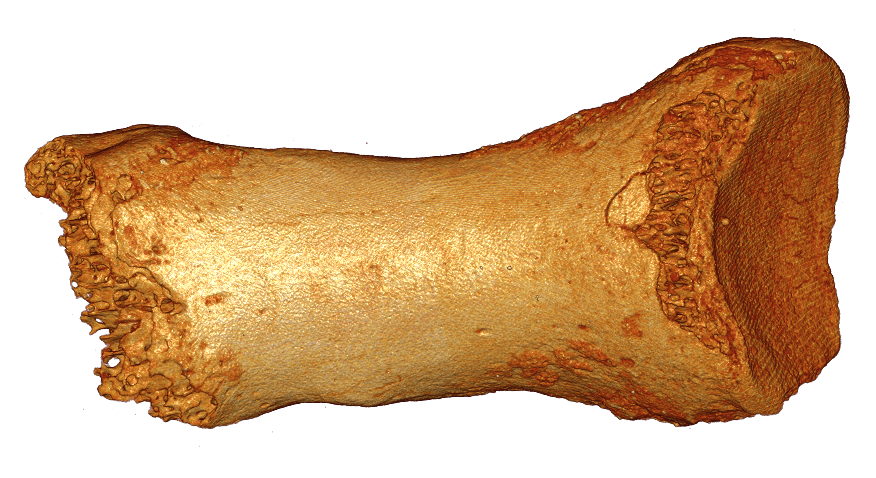Researchers have found modern human DNA in the genome of a 100,000-years-old Neanderthal individual. This suggests that humans and Neanderthals interbred about 50,000 years earlier than previously thought. The implications are staggering considering humans left Africa to settle Europe and Asia about 65,000 years ago. How was this possible? Researchers suggest that this gene flow comes from modern humans who left Africa even earlier — maybe the very first wave.

An unknown group of homo sapiens cross-bred with Neanderthals 100,000 years ago. Image: IVAN HEREDIA / CSIC
For some time now, we’ve known for sure that Neanderthals and humans cross-bred, and that this happened following the migration of humans out of Africa into Europe where the Neanderthals occupied vast territories. This is evidenced by the fact that non-African people alive today have about 2% Neanderthal DNA, while sub-Saharan Africans (those whose ancestors were never to Europe) share 0% Neanderthal DNA. This interbreeding event is thought to have first began some 65,000 years ago, and ended for sure 45,000 years ago when the Neanderthals who had called Europe their home for hundreds of thousands of years became extinct. Nobody knows for sure why, but a combination of competition with humans, maladaptation to climate change and starvation due to the extinction of large mammals likely brought this demise.
Recently, an international team of researchers published a paper in Nature in which they detail the genome analysis of a Neanderthal and a Siberian Denisovan, as well as the sequences of chromosome 21 of a Neanderthal found in the ‘Sidrón’ cave in Asturias, Northern Spain, and of another from Vindija, Croatia. They found that the Neanderthal genome from Siberia has sequences resembling those in humans. The remains of the Neanderthal were found in a cave in the Altai Mountains in southern Siberia, near the Russia-Mongolia border. The other two Neanderthals, as well as the Siberian Denisovan, did not carry these modern human genes.
“This is the first genetic evidence of modern humans outside of Africa already 100,000 years ago. In addition, they met Neandertals around that time. So, we are pushing back about 50,000 years the time that modern humans and Neandertals met outside Africa,” co-author Sergi Castellano of the Max Planck Institute for Evolutionary Anthropology told ZME Science.
The modern human DNA sequences in the Altai Neanderthal appear to derive from a modern human group that separated early from other humans, “about the time present-day African populations diverged from one another, around 200,000 years ago,” says co-author Ilan Gronau, who is now at the Herzliya Interdisciplinary Center, Israel.

Scenario of interbreeding between modern humans and Neanderthals: Neanderthal DNA in present-day humans outside Africa originates from interbreeding that occurred 47,000 – 65,000 years ago (green arrow). Modern human DNA in Neanderthals is likely a consequence of earlier contact between the two groups roughly 100,000 years ago (red arrow). Image: Ilan Gronau
Without a doubt, these findings will have profound implications on the evolutionary model anthropologists use to explain how we humans got to where we are today. For some time, there has been reason to believe there had been an earlier migration out of Africa judging from archaeological findings like those found at Skhul and Qafzeh in Israel. In 2014, scientists found early homo sapiens teeth dated from 100,000 years ago in what is today China. “These fellows were taller and stronger than us. And they retained primitive features in mandibles and teeth,” Antonio Rosas from the Spanish Natural Science Museum told ZME Science.
The accepted view that humans evolved in Africa 200,000 years ago and migrated 65,000 years ago only is starting to crumble. Earlier migration waves, maybe a couple, made their way to Europe and Asia. Some went extinct, others interbred.










